Session 8: Defining new Scicos
blocks
To define a new block, two functions are required. The first one is
the Interfacing function (or GUI function)
which determines the graphical properties, parameters, ..., and the name
of the computational function. And the computational
function which performs the computations required during simulation. The
Interfacing function must be a Scilab function, the computational function
can be in C, fortran or Scilab language.
How these functions can be defined is discussed in Inside
Scicos. Here we look at a couple of ways of defining new
blocks on-line. In these cases, a canonincal Interfacing function is used.
We have seen one way of defining new blocks: compiling a Super Block.
If the block is just an immediate funcition (it
does not have any state) and has no input or output activation ports, then
it can be realized using C or
Fortran block
in Others palette.
These blocks allow for online definition of the computational function
respectively in C and fortran language.
Copy Fortran
block from the Others
palette
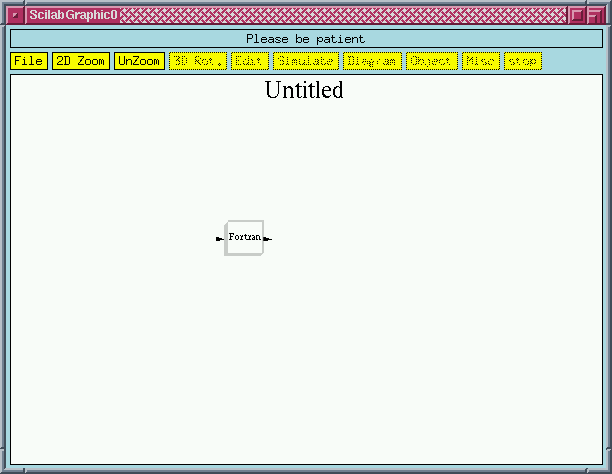 Fortran block allow online definition of computational function
Fortran block allow online definition of computational function
In order to use this block, you must have a fortran compiler or
an f2c. On MS Windows, you need Visual C++,
f2c is included in the Scilab package.
Click on the block after selecting
Open/Set in
Object menu
You can now specify
input-output port sizes, block parameters and the name of the fortran function
to be used for computational function.
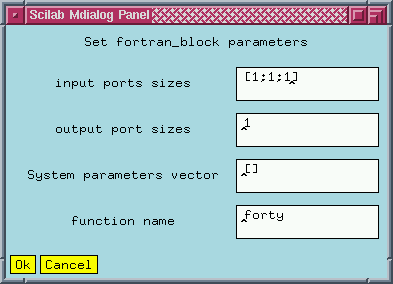 This block will have 3 scalar inputs and 1 scalar output. forty
will be the name of computational function
This block will have 3 scalar inputs and 1 scalar output. forty
will be the name of computational function
Scicos now generates the synopsis of forty (calling sequence and the declarations)
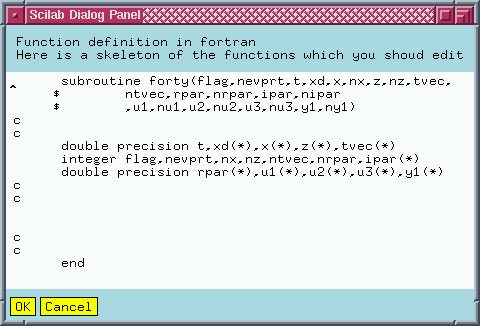 The above is automatically generated
The above is automatically generated
The function can now be defined by typing any number of fortran expressions
in the above Dialog Panel.
Modify the text as follows
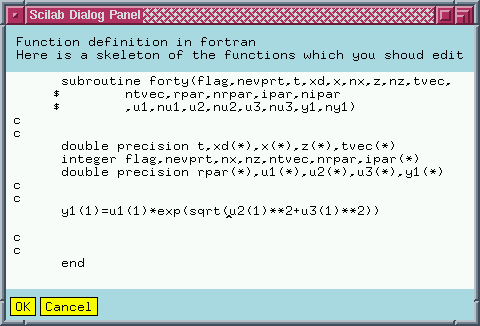 The complete fortran computational function
The complete fortran computational function
After clicking on the OK button, forty is compiled and linked automatically,
and we are back to Scicos' main window.
Click on OK to get back to the
diagram
The
block has now the correct number of input and output ports. It can
be used to in the construction of the diagram.
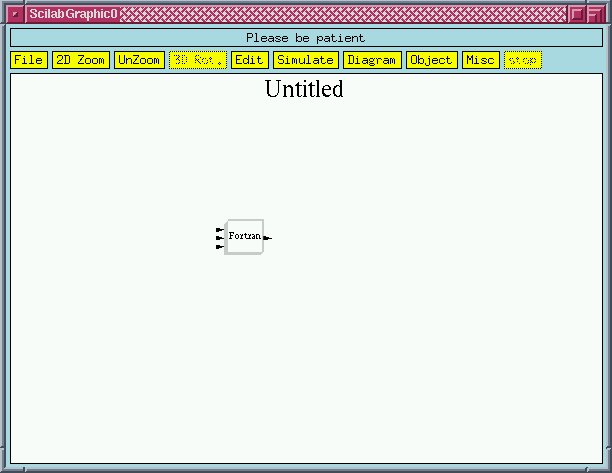 The block is now ready to be used
The block is now ready to be used
Saving the diagram that contains this block saves the source of the
fortran function. When this diagram is loaded later in Scicos, the compilation
and incremental linking is done automatically if needed. The icon of the
block can of course be changed using Icon in Object menu.
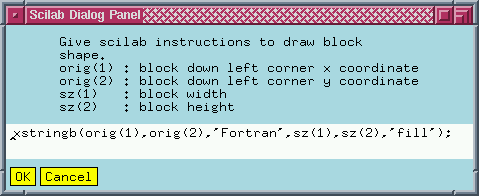 Original Icon
Original Icon
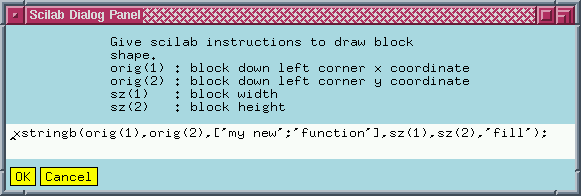 New Icon
New Icon
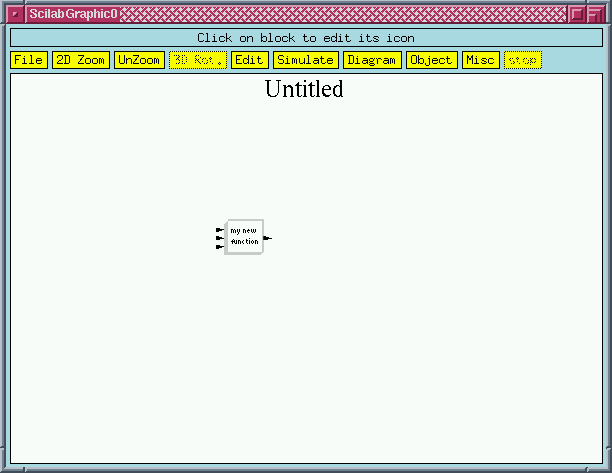
The C block works exactly the same way except that the C language is used
instead of fortran. As for Scifunc block, same thing except that Scilab
expressions are used. In the case of Scifunc, the block can even have discrete
and continuous states.
Ready to go on?
For more information about Scicos, send an e-mail to Doctor Scilab:
Scilab@inria.fr
For suggestions about this Web server, send an e-mail
to Scilab@inria.fr








